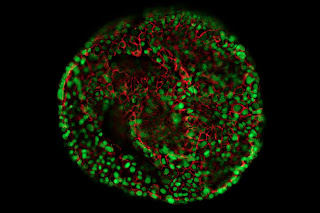3D Cell Culture Market By Technology- Scaffold-Based, Scaffold-Free, By Application- Tissue Engineering, Organ-on-Chips, Drugs Discovery
Browse the full report at @https://www.sheeranalyticsandinsights.com/market-report-research/3d-cell-culture-market-21
Traditionally, 2D cell cultures have been the gold standard in laboratory research, providing valuable insights into cellular behavior and responses. However, these cultures fail to replicate the intricate cell-cell interactions, spatial arrangements, and physiological gradients present in vivo, limiting their relevance in translational research. Consequently, drug candidates often exhibit promising results in 2D models but fail during clinical trials due to unforeseen complexities in human physiology.
The transition to 3D cell culture techniques addresses these limitations by enabling the cultivation of cells in a more physiologically relevant microenvironment. In 3D cultures, cells can form complex multicellular structures resembling tissues and organs, allowing researchers to study cellular behaviors, drug responses, and disease mechanisms with higher fidelity. This approach holds immense potential across various biomedical applications.
One of the primary drivers propelling the growth of the 3D cell culture market is its utility in drug discovery and development. Pharmaceutical companies are increasingly turning to 3D models to enhance the predictability of preclinical drug screening assays. By using 3D cultures that mimic human tissue architecture, researchers can better assess drug efficacy, toxicity, and pharmacokinetics, leading to more accurate predictions of clinical outcomes. This shift toward 3D models has the potential to streamline drug development pipelines, reduce costs, and minimize late-stage failures.
Furthermore, 3D cell culture technologies offer significant advantages in disease modeling and personalized medicine. By culturing patient-derived cells in 3D environments, researchers can better recapitulate disease phenotypes and study individualized responses to therapies. This approach is particularly valuable in cancer research, where 3D models allow for the exploration of tumor biology, drug resistance mechanisms, and the development of targeted therapies tailored to specific patient populations.
Moreover, the growing interest in regenerative medicine and tissue engineering has spurred the demand for advanced 3D cell culture platforms. Researchers are leveraging 3D cultures to engineer functional tissues and organs for transplantation, disease modeling, and drug testing. These bioengineered tissues hold promise for addressing critical healthcare challenges, such as organ shortage and the development of patient-specific treatment strategies.
The 3D cell culture market is characterized by a diverse array of technologies and products catering to the evolving needs of researchers. Innovations in scaffold-based systems, organ-on-a-chip platforms, and bioreactors have expanded the capabilities of 3D cell culture, enabling more precise control over cellular microenvironments and physiological parameters. Additionally, advancements in imaging techniques, such as confocal microscopy and high-content screening, have facilitated the characterization and analysis of 3D cultures with unprecedented detail.
Despite its remarkable potential, the widespread adoption of 3D cell culture still faces several challenges, including standardization, scalability, and cost-effectiveness. Efforts to address these challenges through interdisciplinary collaborations, technological advancements, and regulatory initiatives are underway to accelerate the translation of 3D cell culture technologies from bench to bedside.
Get sample of this report @https://www.sheeranalyticsandinsights.com/request-sample/3d-cell-culture-market-21
Key players in the global 3D cell culture market include 3D Biomatrix, 3D Biotek LLC, Becton Dickinson and Company, Global Cell Solutions, Inc., InSphero AG, Lonza Group, Merck, Nano3D Biosciences Corning Inc., Synthecon, Thermo Fisher Scientific and VWR International LLC.
The Global 3D Cell Culture Market has been segmented as follows:
Global 3D Cell Culture Market: By Technology
Scaffold-Based
Hydrogel
Polymeric hard material
Scaffold-Free
Global 3D Cell Culture Market: By Application
Tissue Engineering
Organ-on-Chips
Drugs Discovery and Testing
Cancer Research
Others
Global 3D Cell Culture Market: By End-User
Research Institutes
Hospitals
Pathology Laboratories
Others
Global 3D Cell Culture Market: By Geography
North America
U.S.
Canada
Mexico
Europe
U.K.
France
Germany
Italy
Rest of Europe
Asia Pacific
India
China
Japan
Rest of Asia Pacific
Middle East and Africa
South Africa
Rest of Middle East and Africa
Latin America
Brazil
Rest of Latin America
About Us:
Sheer Analytics and Insights Private Limited is market research, consulting, and IT services company. We as a company believe in providing point to point data and its analysis with the combination of our human and automation integration. Sheer Analytics and Insights cover majorly eight industry verticals, including chemicals, life science, communications, and electronics, materials, consumer goods, defense, and BFSI sector.
Sheer Analytics believes in quality work and ensures that the product delivered to the client is meaningful for them. We publish reports based on our advanced analytics reports, which are generated with the help of our in-house databases, external databases, and artificial intelligence integration processes. We stand out from other market research companies in terms of integrating facts with meaningful insights for forecasting.
Contact:
Sheer Analytics and Insights
Call Us:- +1-414-240-5010




Comments
Post a Comment